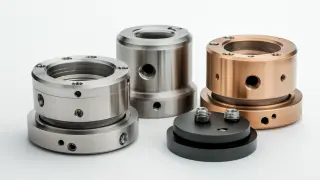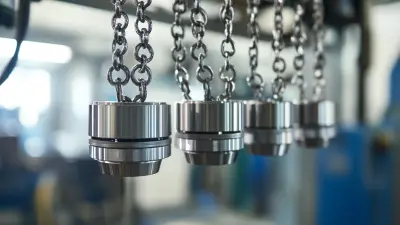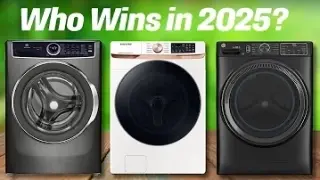 [email protected]
[email protected] 
-
Home
-
Products
-
News
-
About Us
-
Contact Us
Leave Your Message
-
 CONTACT LCS TECH
CONTACT LCS TECH -
 CONTACT LCS TECH
CONTACT LCS TECH



The future of Weight Sensor technology is expected to undergo some major changes, directly impacting various industries in the process. Advancements in this area are not only to ensure more precision in weighing systems but also to satisfy increasing requirements for efficiency and integration of smart systems. Therefore, after 2025, we may also see some new weight sensing solutions, which combine new-age materials and state-of-the-art artificial intelligence with IoT connectivity, to produce applications that are more responsive, accurate, and flexible.
The Shenzhen Fosen Technologies Co. Ltd., endeavoring at the vanguard of sensor technology advancement, embarks upon a conscientious exploration of means to enhance Weight Sensor capabilities. The research-driven nature of our company will solve the problems arising from currently used sensor technologies and bring in new concepts that can very much change how various sectors from healthcare to logistics use weight measurement. With our embrace of innovation, the future of Weight Sensors shines bright with smarter and more connected solutions that will address tomorrow's needs.

Sensor miniaturization and flexibility advancements would totally change the sense technology weight sensor. These sensors would be packed into many possible applications, for instance, from healthcare devices that would-stringently track patient metrics to smart homes that would manage energy efficiently, the make of smaller and more flexible sensors becomes a reality now nourished greatly by the IoT. They will become integrated into another aspect of connectivity: the better the real-time data exchange made possible, the better the decision-making. Recent advances in sensor technology education underscore how important expert knowledge is in this field that is changing. The programs are comprehensive in nature and engineer creativity and design abilities in sensor solutions for the future. This is much like what happens in aviation owing to the creation of lightweight sensors for future aerial vehicles. An interesting trail of technology promises to deliver even happier and more successful future-to-be systems benefiting diverse sectors.
Developmental prosecution regarding wireless methods in weight sensor technology shall be given greater momentum for 2025 and beyond. With the rapid development of the Internet of Things (IoT), one can imagine that weight sensors will become more and more connected in the near future, collecting and analyzing data in real-time, thereby allowing the interaction and operation of various devices. The new type of seamless communication will maximize their functionality in diverse applications, healthcare, and smart homes foremost among them.
The new technology is setting the stage for more advanced wireless protocols such as low-power network connections and newer data encryption modes. These technologies will ensure that not only are weight measurements much more accurate and reliable, but they will also heighten patient monitoring capabilities. Envision weight sensors that can converse with other health-monitoring devices to give an overview of the patient's well-being, all without manual data input—this will indeed convert weight management into a fully proactive and automatic conditioning event.
These new materials will contribute significantly to changing weight sensor systems in and after 2025. Advanced polymers and nanomaterials will provide innovative materials for sensor advancement. Very lightweight and high sensitivity new materials can make weight sensors accurate and durable in extreme conditions of applications, such as medical devices and IoT devices.
The futuristic weight sensor will not only be more sensitive but will also allow itself to be integrated into various environments, by the use of the most advanced materials, such as graphene and smart alloys. The more industries adopt automation and novel intelligent technologies, the more the demand for efficient and reliable weight sensors will increase. This process goes hand in hand with broader sensor technology-the advancement of current sensor technology, which is very rapid and adapts to the needs of these emerging markets and applications in the healthcare and smart transportation sectors.
As the world embraces sustainability, the production of weight sensor technology will experience a paradigm shift post-2025. Innovations stemming from better materials and greener production techniques are essentials for the demand for sustainable products. This change improves not just the environmental footprint of manufacturing practices but also helps keep weight sensors in the race against an environmentally conscious marketplace.
Tomorrow's weight sensors will probably be used in conjunction with cutting-edge neural network technologies much as related fields have used them for robotics and other sensor applications. By embedding intelligent sensing solutions, manufacturers can build devices that will not only weigh an object but also analyze the data for better efficiency and accuracy. A rapid expansion of the global sensor market towards a valuation of over $250 billion will place a prime focus on sustainability in order to influence novel designs and functionality that meet current environmental standards.
AI is envisioned to revolutionize health and fitness monitoring through integration with weight sensing technologies beyond 2025. New AI algorithms will allow weight sensors to obtain accurate measurements and relay useful real-time information for the benefit of the individual user in tracking certain health metrics that, in turn, lead to personalized wellness solutions.
The marriage of AI algorithms with weight sensors is what will enable such smart devices to follow the user's routines and preferences. Similar innovation and sophistication in sensor technologies nowadays for applications such as light sensing and IoT have already paved the way for AI-driven weight sensing for total health monitoring. From better nutrition tracking to enhanced feedback loops, the future is set for truly smart innovations and precision to better comprehend personal health and wellbeing.
In the future of weight sensor technology, calibration and enhancement in the accuracy of sensors have become the major concerns. Those innovations are supposed to benefit from the recent revolution in sensor technology, resulting in much more accurate measurements, the requirements for all purposes, particularly in healthcare. Newer methods of calibration will reduce medication errors and provide reliable information from a weight sensor that could use small personal or medical-level consumer applications.
The weight of IoT will also be the newest hope for the forward-looking smart living. As the number of connected devices continues to rise, smart weight sensors will quickly do more than just measure weight. They will observe and analyze trend reports over time, and this will provide users with results-oriented insights. Beyond 2025, techniques for further calibration will be the ground for increasing efficiency and reliability of weight sensors in an ever-widening number of application areas, from healthcare to fitness.
The possibilities for the innovations of weight sensor usages over various markets beyond 2025 appear encouraging. Sensor technology is advanced in its applications in several industries, chiefly health care today, where precision and accuracy become even more crucial. Weight sensor innovations are going to play a significant role in some areas-from medical diagnostics in easy and comfortable fitness monitoring and exercising for individualized health solutions.
Furthermore, with the emergence of IoT, weight sensors are expected to benefit by continuing to be integrated into intelligent environments such as smart living. This development would help the users have a far better experience and help improve data analysis while allowing for smarter management across areas such as retail and logistics. Emerging technologies will indeed support all those changes to make room for more applications and new market opportunities related to weight sensor technology.
The weight sensor technology will bring about great changes in the health and fitness industry. These sensors will most definitely induce personal health monitoring in which real-time accurate data will be given for individuals to control their personal health fitness journeys. With the dawn of AI wearables in exhibitions such as CES 2025, it would not be far-fetched to think weight sensors would be attached to smart clothing to monitor metrics within the body and offer a customized experience by informing weight changes or well-being conditions.
Advanced weight sensors embedded within home fitness devices will not only change workout habits. Analysis of body weight and performance during workout routines would act as a platform for an intelligent feedback interface, instantly modifying and thus personalizing a training program as the maximum benefit is derived. In the future, weight sensors will probably become the next big thing in smart health ecosystems; preventive health measures and individualized nutrition plans would likely rely on them.
The future of weight sensor technology seems to be ripe with challenges with regard to the uptake of next-generation devices. These advanced sensors, typically found in an autonomous vehicle or the IoT domain, pose a very delicate balance between innovation and user readiness as their adoption for weight measurement necessitates a great deal of change in infrastructure and consumer behavior for seamless implementation.
Then again, technology races ahead at a blazing speed to make interoperability and data privacy major emerging concerns. The introduction of smart weight sensors that begin to interconnect with other devices within the IoT ecosystem demands state-of-the-art, secure, private data exchange. Companies will need to build strong cyber defenses while educating users on their benefits and risks to accept the use of such technology.
Smart home devices are rapidly advancing with great hopes for applying weight sensor technology to develop user experience and functionality. These sensors can be integrated into daily home appliances and provide values of weights along with user insights on consumption and inventory conservation. An example of this scenario might be a smart fridge that auto-monitors the weight of food items and generates alerts when food is running low or might even provide recipes based on existing ingredients.
However, the application goes beyond kitchen items. In smart bathrooms, weight sensors can contribute to wellness monitoring by tracking the body weight of users for health maintenance. Additionally, through smart fitness equipment, weight sensors could analyze data about users to help personalize their workouts on his/her own oversee progress. With continuous innovations and advancements in sensor technology, the seamless integration of weight sensors into smart home devices will indeed revolutionize convenience and health monitoring in our daily lives.
The blog highlights advancements in sensor miniaturization and flexibility, allowing sensors to integrate into various applications like healthcare devices and smart home systems.
Miniaturized sensors will enhance connectivity within IoT systems, facilitating real-time data exchange and improving decision-making processes.
Educational initiatives are equipping professionals with the necessary skills to innovate and design advanced sensor solutions, fostering progress in the field.
The aerospace industry is experiencing significant developments, particularly with the creation of lightweight sensors for next-generation aerial vehicles.
Challenges include the need for infrastructure changes and shifts in consumer behavior, as well as concerns about interoperability and data privacy in IoT systems.
Companies should invest in robust cybersecurity measures and educate users about the benefits and risks of these technologies to build trust and encourage adoption.
User readiness is crucial as it affects the seamless implementation of advanced sensors, and challenges in changing consumer behavior may hinder adoption.
As smart weight sensors connect with multiple devices in an IoT ecosystem, ensuring that they can communicate effectively without compromising functionality is essential.
Smart weight sensors can provide more efficient and smarter systems that enhance performance and decision-making across multiple industries.
The trajectory indicates a future filled with smarter, more efficient systems that leverage advanced sensors across various applications, improving overall efficiency and effectiveness.




